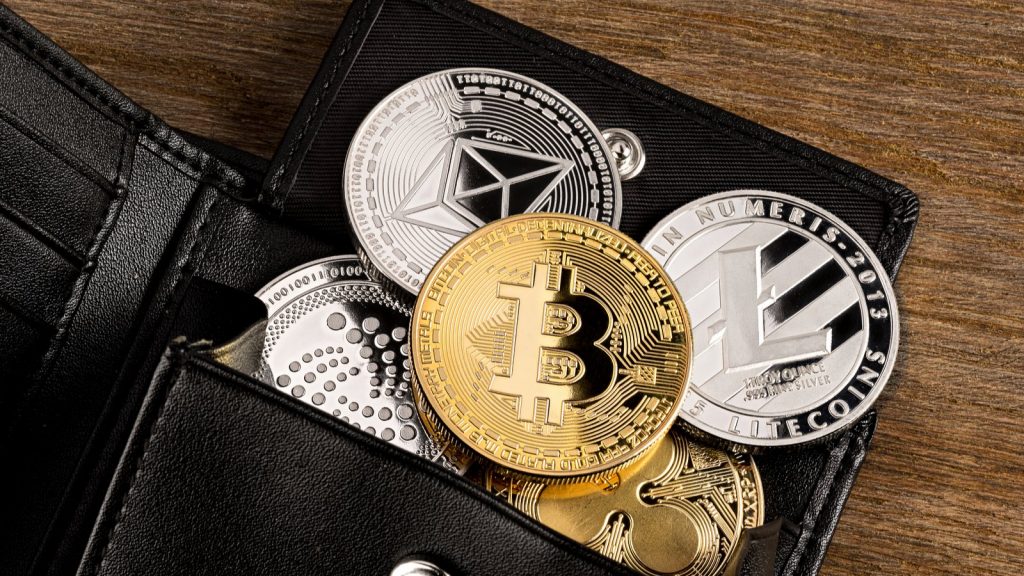
In 2021, the cryptocurrency market was volatile and full of twists in turn. This year also saw an explosion in crypto-investment by individuals and institutions.
It is undeniably the most important cryptocurrency with more than 40% of its market capitalization. Although Bitcoin is still the most important cryptocurrency, it was not the best performing. In fact, several secondary cryptos (sometimes called altcoins) outperformed Bitcoin in terms of performance in 2021, despite being older than BTC in some cases.
This article will highlight five cryptocurrencies that are not Bitcoin. Keep this in mind for the coming year. We’ve removed less serious crypto memes and coins from the article in order to focus on proven, solid projects that could have real value while still offering significant potential for growth in 2022.
Ethereum: Ethereum 2.0 could be a game changer
It is sometimes criticized for its network congestion, which causes slow transfer times and/or prohibitive charges. However, it is difficult to ignore. It is second in cryptocurrency market share, after Bitcoin. But, Ethereum is still the preferred network for many cryptocurrency projects. ETH is the preferred platform for NFTs and DeFi transactions. ETH is the platform that more than 90% of NFT transactions are conducted on, for example.
The year 2022 will see an important update to Ethereum. This update, Ethereum 2.0, will address the most critical problem with Ethereum: the slow transaction speed. ETH 2.0 will boost the network’s capacity by approximately 30 transactions per seconds to 100,000. This is mainly due to the switch from the ‘proof of stake’ validation method. This eliminates the lengthy validation process that involves complex calculations. The network’s energy consumption is also significantly reduced, which is important as many investors are concerned about the impact of their investments on the environment.
Decentraland: The best crypto to wager on the metaverse
Meta Platforms (formerly Facebook (NASDAQ:)), has launched a new strategy that focuses on creating a metaverse. This brought attention to several cryptocurrencies, many of which Mark Zuckerberg did not wait to implement the idea. One of the most important is Decentraland. This is a fully functional metaverse where you can purchase properties and take part in online games or other experiences.
After Facebook’s announcements, the MANA, the cryptocurrency that is used in Decentraland, saw a meteoric rise, but then lost much of its gains during the cryptocurrency correction. However, investors will continue to be interested in the metaverse after the dust settles. Decentraland is likely one of the most popular cryptocurrencies to benefit from the phenomenon.
Solana: Ethereum’s most serious competitor
A specific set of cryptocurrencies has emerged from the Ethereum network’s shortcomings. They offer a similar value proposition as Ethereum and correct many of ETH’s major flaws. is frequently referred to as the most powerful and serious competitor to Ethereum.
Solana emphasizes its massive transaction processing capacity. Ethereum is currently processing only a handful of transactions per second. ETH 2.0 will eventually fix this problem. However, Solana is an immediate alternative and is especially efficient as it can process 50,000 transactions per minute.
Solana is an unanticipated candidate in the NFT market share fight and is already proving to be a formidable opponent for Ethereum. In just minutes, 10,000 tokens were purchased for the launch of NFT Solana Degenerate Apes Academy. This was a major milestone for Solana. It has also allowed Solana start slowly taking market share away from Ethereum.
IOTA – A crypto company that specializes in IoT, and is a partner of Dell
This cryptocurrency, unlike the other three mentioned in this article has not made the headlines in the trade media this year. IOTA provides data security services for IoT devices (Internet of Things), which are electronic objects that can be connected to the Internet. This industry is expected to grow rapidly in the future, particularly with the new opportunities presented by 5G mobile networks. These networks are expected to be fully operational in 2022.
IOTA was supported by Dell Technologies (NYSE.) earlier this year when the computer giant entered into partnership with the cryptocurrency project. This partnership, known as Project Alvarium is focused on assessing the trustworthiness of data before it’s used by applications. Beyond the actual project, it is important to consider the IOTA network and the fact that Dell is an internationally recognized company is reason enough to be interested in the cryptocurrency.
Polkadot: Blockchains can communicate with one another
There are increasing numbers of cryptocurrencies and tokens in all areas. Even though all blockchains share the same fundamental principles, they still have difficulty communicating with one another. This solution was proposed by one of the cofounders of Ethereum.
Polkadot consists of a main network, the relay chain, and parachains which operate in parallel and act as bridges to connect with other blockchains. Blockchain technology is being used in many areas beyond cryptocurrency markets, such as supply chain management. It has also been called to generalize in multiple sectors. This means that communication between public and private blockchains should increase exponentially. Although Polkadot should be a major beneficiary, there are many other cryptos that can also fulfill this need.
